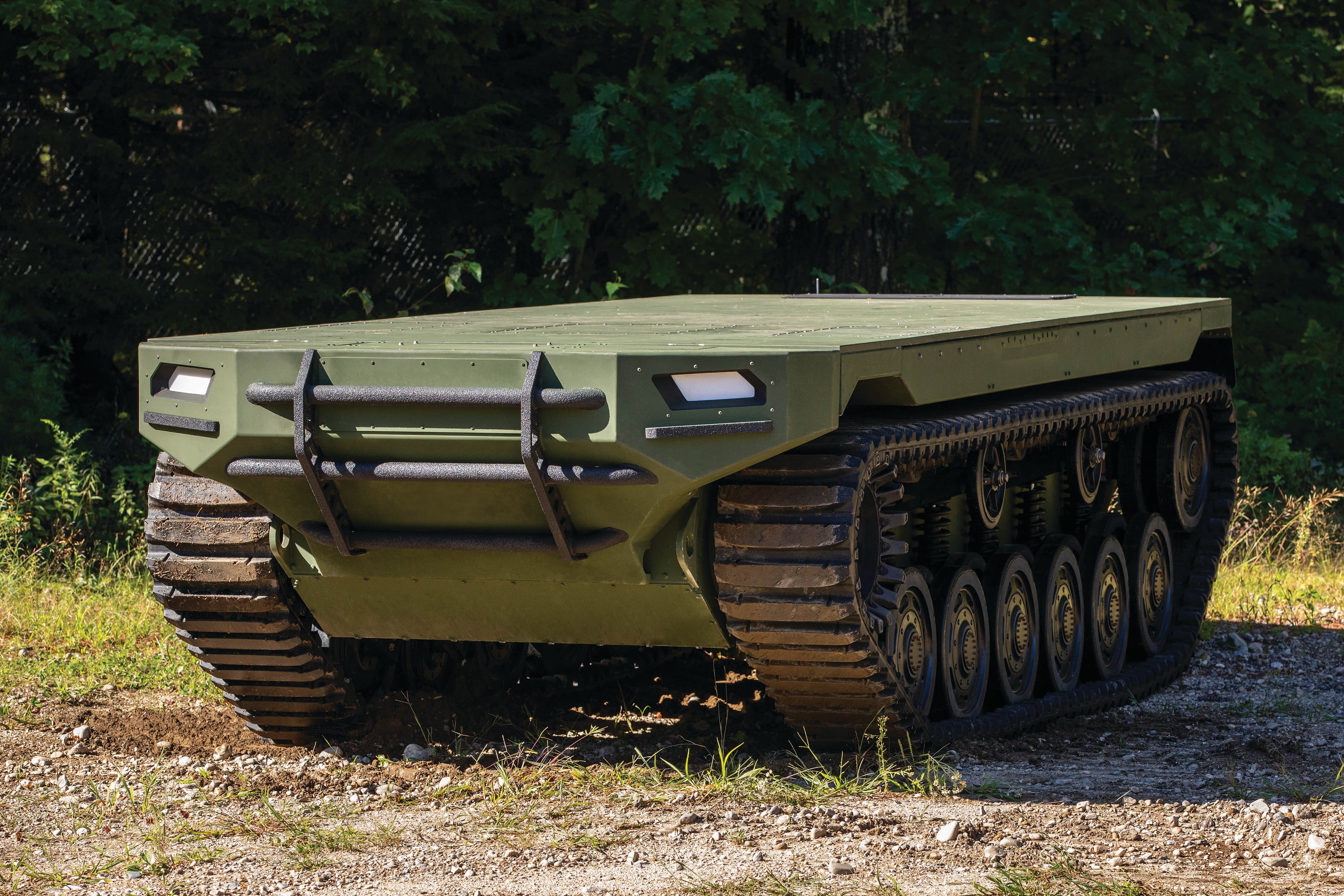WASHINGTON — Textron Systems is bringing its latest unmanned ground vehicle with amphibious capabilities to the Association of the U.S. Army’s annual conference.
The company is displaying the aquatically inclined Ripsaw M3 ground robot technology demonstrator at its booth during the show, which runs Oct. 10-12. Textron will demonstrate the robot’s flexibility to accommodate a variety of payloads by swapping them in and out each day of the show, according to David Phillips, the company’s senior vice president of land and sea systems.
Textron debuted its Ripsaw M5 at AUSA in 2019, and the Army selected the system for the Robotic Combat Vehicle-Medium prototyping evaluation program shortly thereafter. The company has built for the Army five prototypes, including an all-electric version released in 2020.
The service has put these vehicles into soldiers’ hands over the last several years for operational experiments, most recently a five-week event at Fort Hood, Texas.
At 8 tons, including payloads, the M3 robot is smaller than the M5 version, Phillips told Defense News, but is still a bit larger than what the Army has evaluated in an Robotic Combat Vehicle-Light category. The size of the robot is meant to show how Textron can scale the system, Phillips said. The Army has not settled on the exact size required for any of its ground robots, but Textron’s system can fit in a CH-47 cargo helicopter, Phillips said.
The M3 “incorporates a lot of maturity and a lot of the learnings from the M5 product and the several thousand hours of operational experience that we have garnered through it,” Phillips said. “We’re not trying to necessarily presuppose what the Army is going to come up with. We’ve put this technology demonstrator together to position ourselves to de-risk, eventually delivering these bid samples that they’re eventually going to want for an RCV-Light.”

Most noticeable on the new ground robot is its visible water jets, which allow it to swim, Phillips said. The technology is derived from the Cottonmouth Advanced Reconnaissance Vehicle Textron is delivering to the Marine Corps, Phillips added.
While the Army doesn’t have a swimming requirement, “we just wanted to get out ahead of that,” given the service navigates wet gap crossings, he said. The effort is more challenging because the robot is tracked rather than wheeled, Phillips noted, so it’s important to demonstrate the capability and learn from it.
At AUSA, M3 is expected to first feature Electro Optics Systems’ R400S remote weapon station with a 30mm armament on the front, as well as CACI International’s expeditionary mobile air defense integrated system, which is a kinetic counter-drone weapon, and a non-kinetic electronic attack module at the rear.
On the second day, the company plans to swap in Kongsberg’s Common Remotely Operated Weapons Station with Javelin missiles, or CROWS-J, on the front; the back is expected to feature Anduril’s Area-I Altius air-launched effects system.
The third day is expected to feature a Kongsberg CROWS in the front, with an Arnold Defense modular lightweight Hydra system — a high-capacity, 2.75-inch multiple rocket launcher — on the back.
The M3 is designed with enhanced mobility in mind, Phillips said, with a 14-inch ground clearance. “It needs to keep up with the manned systems, it needs to stay ahead of the manned systems,” Phillips said.
Textron also ramped up the robot’s ruggedness after learning from M5 evaluations.
Network issues cropped up during RCV experimentation with the Army, so Textron is working to ensure manned and unmanned vehicles have dependable connectivity and can maneuver well together, Phillips said.
The company will continue to demonstrate capabilities using the M3 over several years. The effort will guide what it submits to the Army’s RCV-Light competition and any other subsequent RCV competitions.
Meanwhile, the Army plans to launch a competition to select and build initial prototypes for an RCV-L in the third quarter of fiscal 2023 based on revised requirements generated from rigorous experimentation over the last several years with RCV-Light, -Medium and -Heavy.
“We’re going to require it to be architected in such a way that we can add capability to it over time, whether that’s by adding sensors, but mostly by adding software,” Maj. Gen. Glenn Dean, program executive officer for the Army’s ground combat systems, told Defense News in a recent interview.
The Army wants to field RCV-Light to a first unit around 2028, he added, “but I think there’s potential for us to be able to pull that to the left.”
Part of the ongoing evaluations include experimenting with a range of combinations of different-sized RCVs, which are “informing future senior leader decisions about whether we want to proceed with a medium program or whether perhaps there are other alternatives,” Brig. Gen. Geoffrey Norman, the Army’s Next Generation Combat Vehicle Cross-Functional Team lead, said in the same interview with Dean.
“Maybe we’re able to get capabilities that soldiers and leaders need with a single platform,” Norman added, “and we’re continuing to experiment in important ways on that to make sure that we’re making operationally informed decisions.”
Jen Judson is an award-winning journalist covering land warfare for Defense News. She has also worked for Politico and Inside Defense. She holds a Master of Science degree in journalism from Boston University and a Bachelor of Arts degree from Kenyon College.








